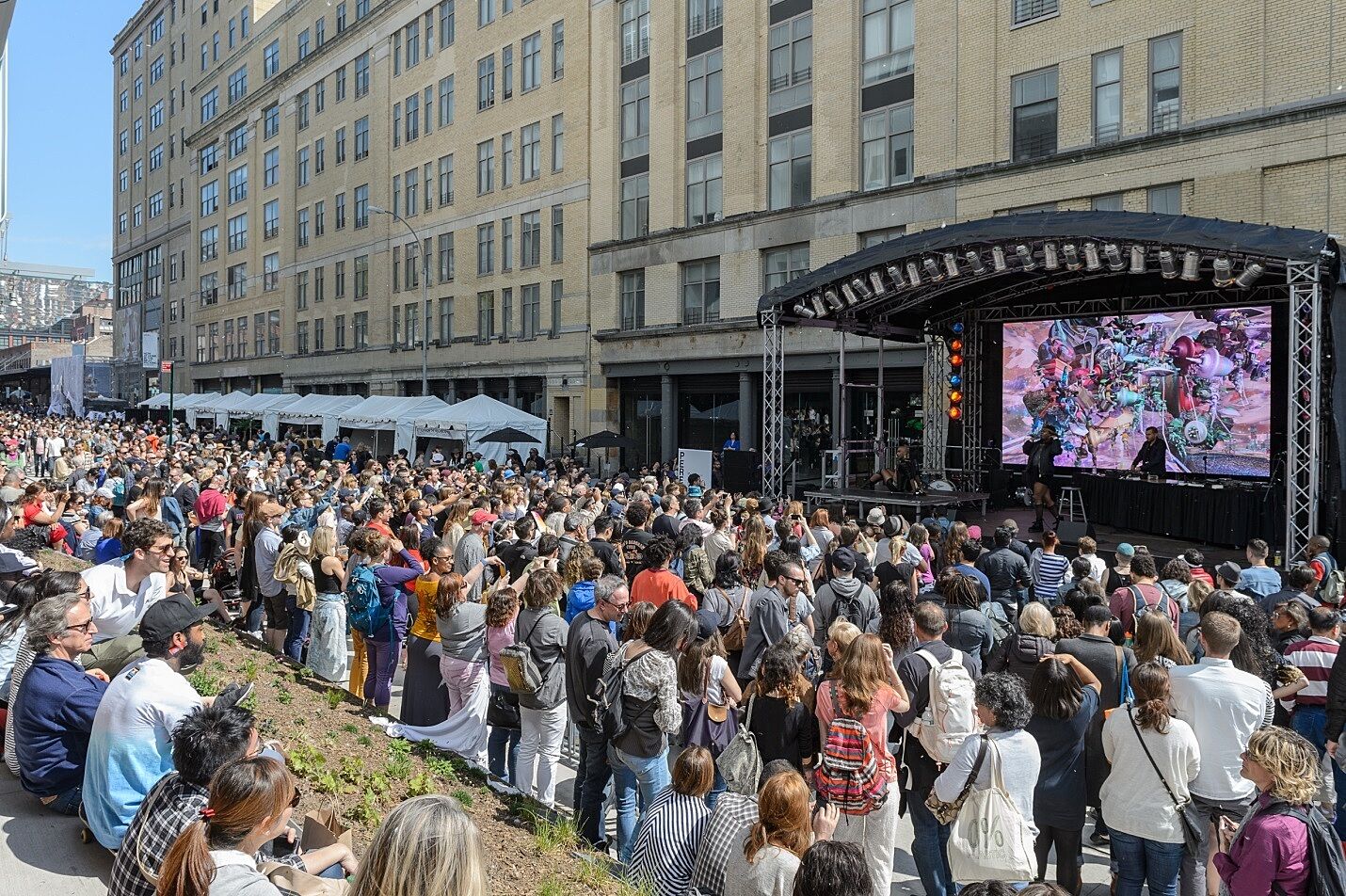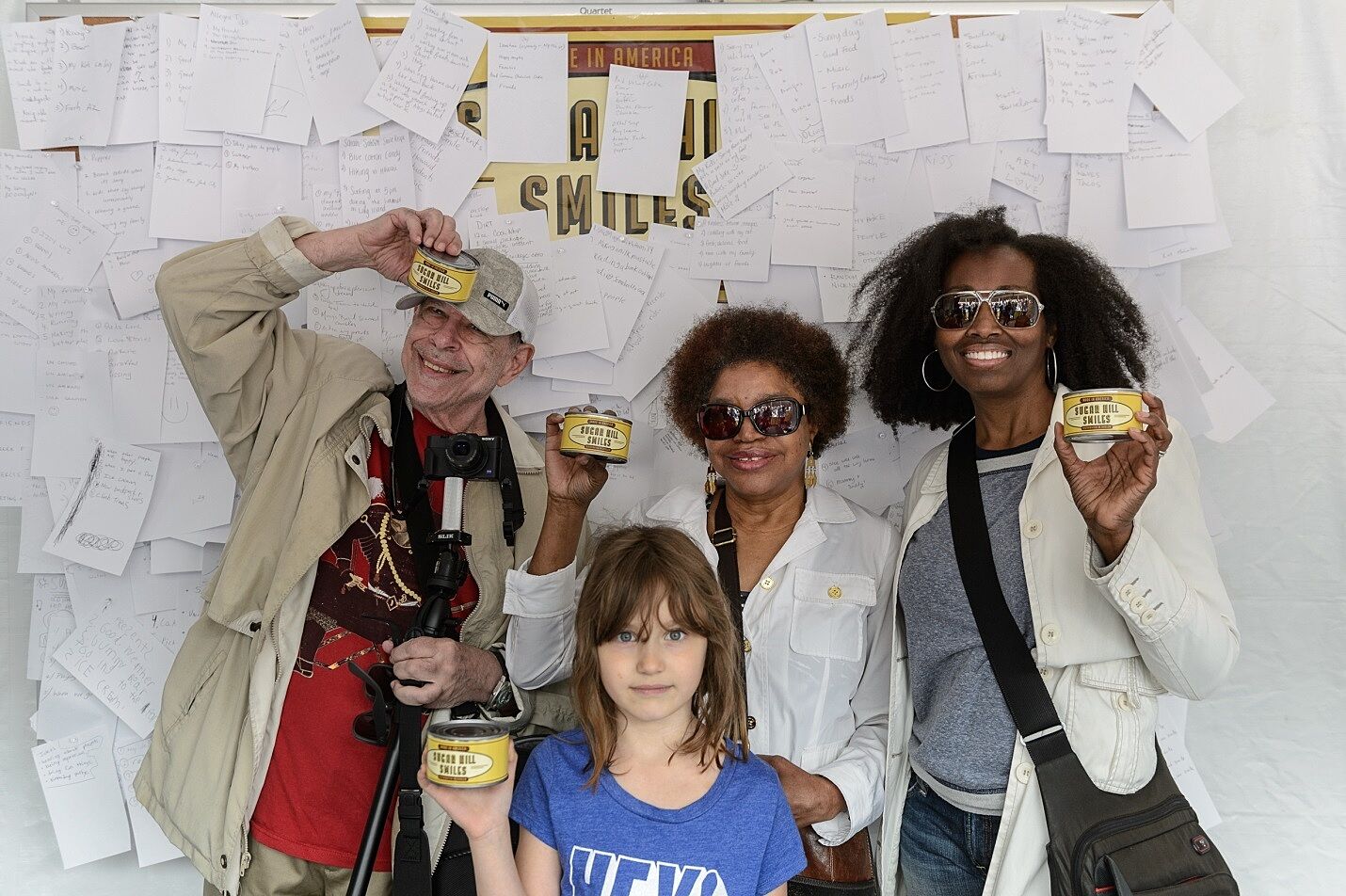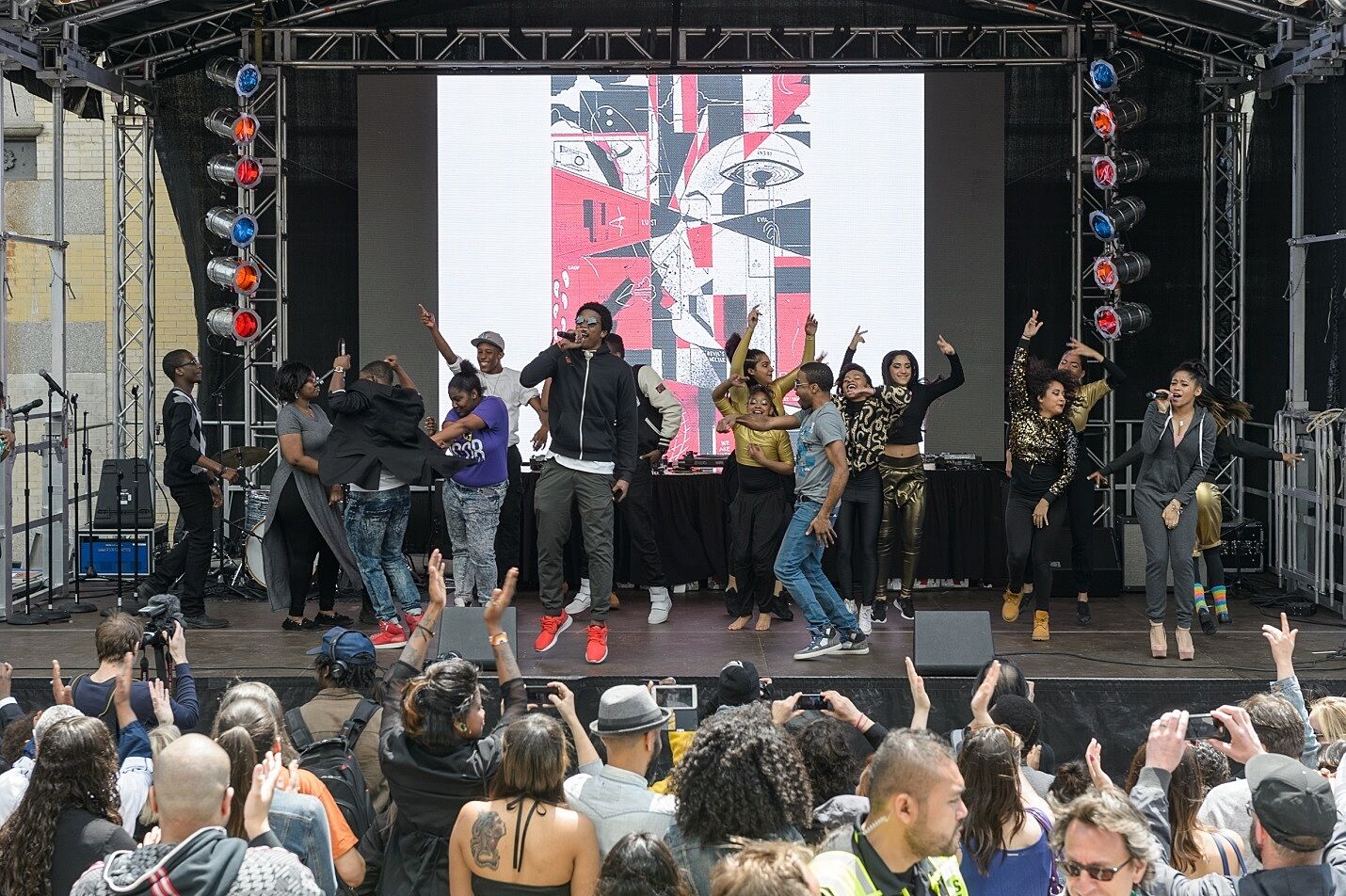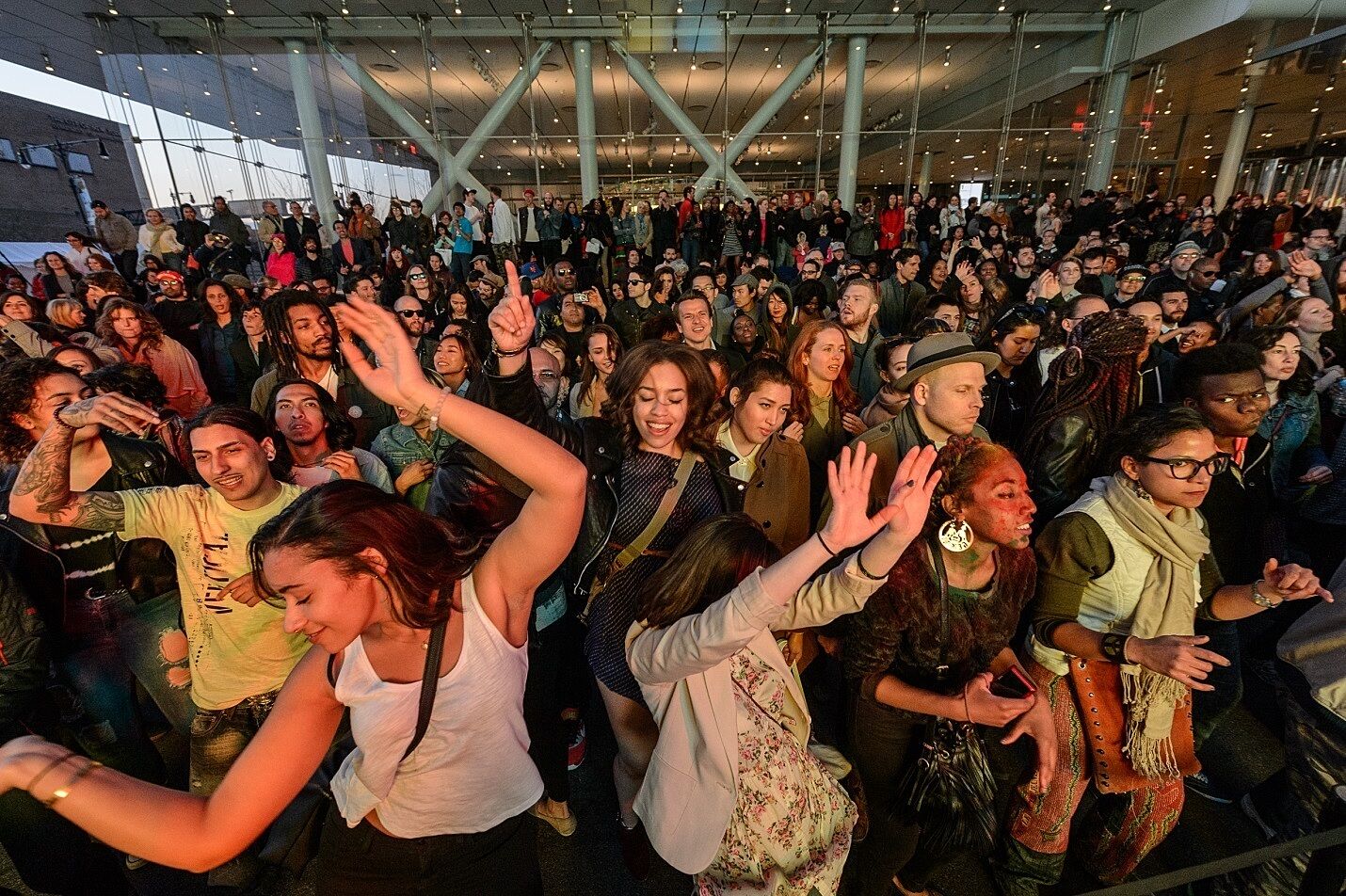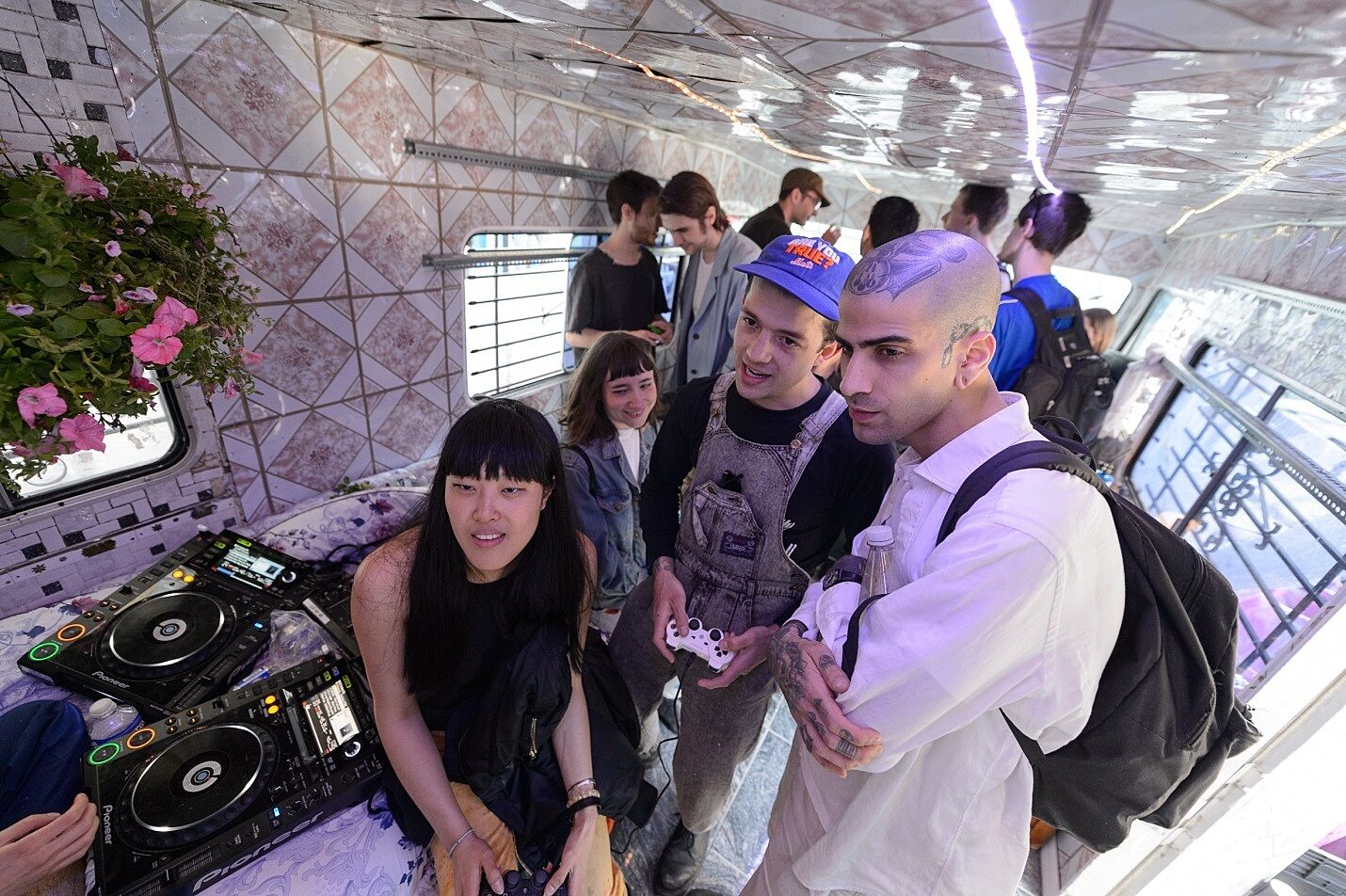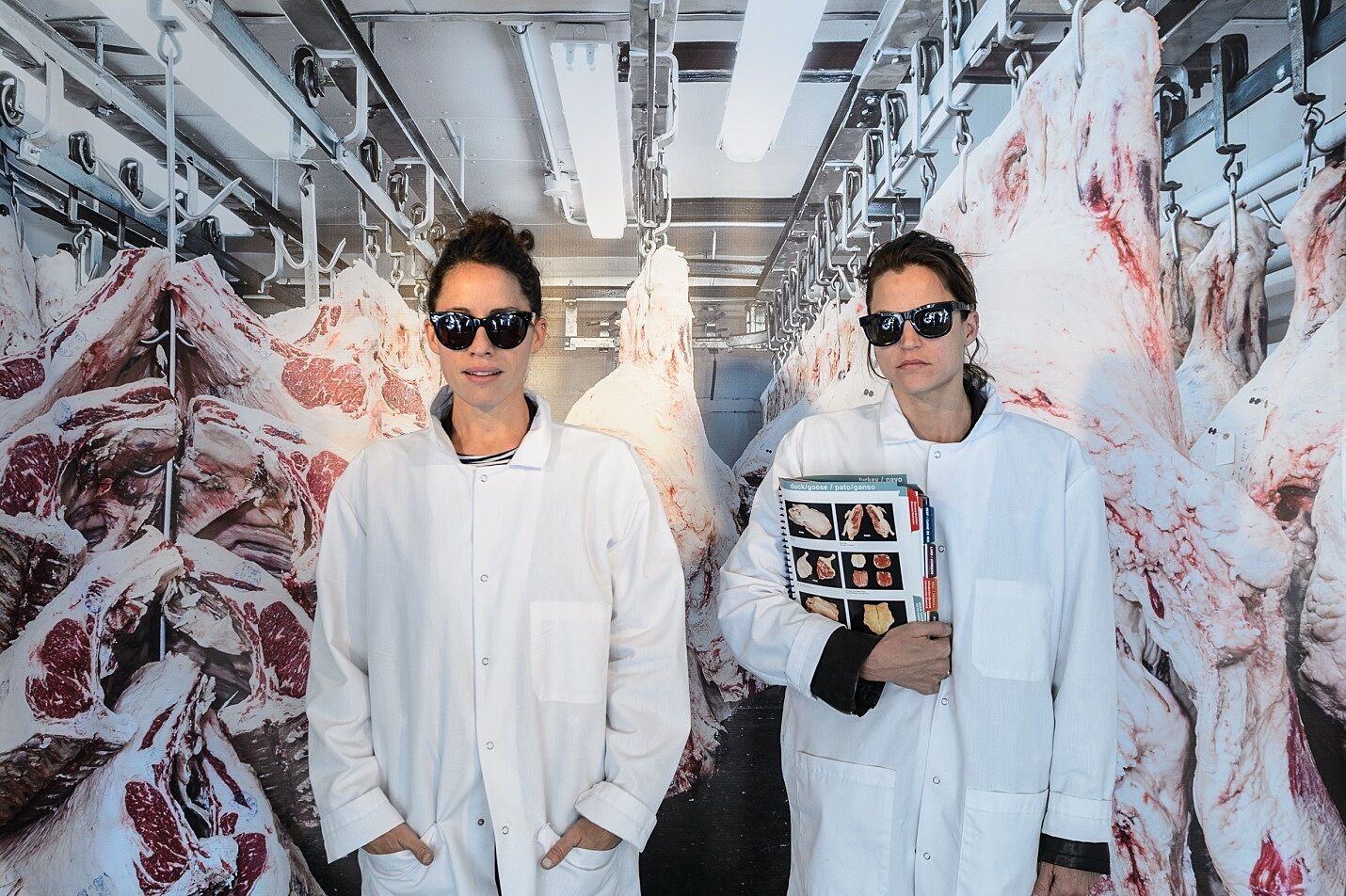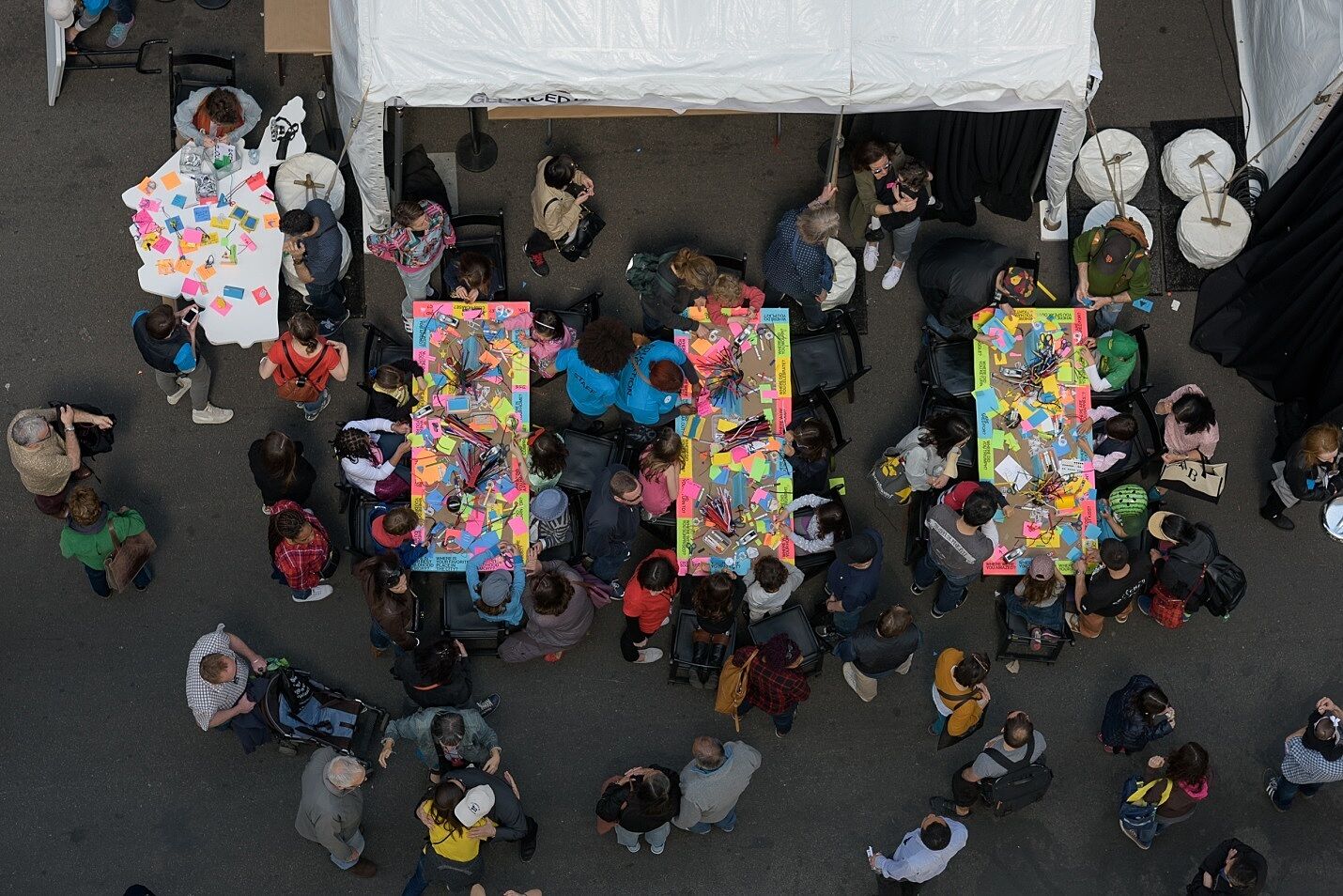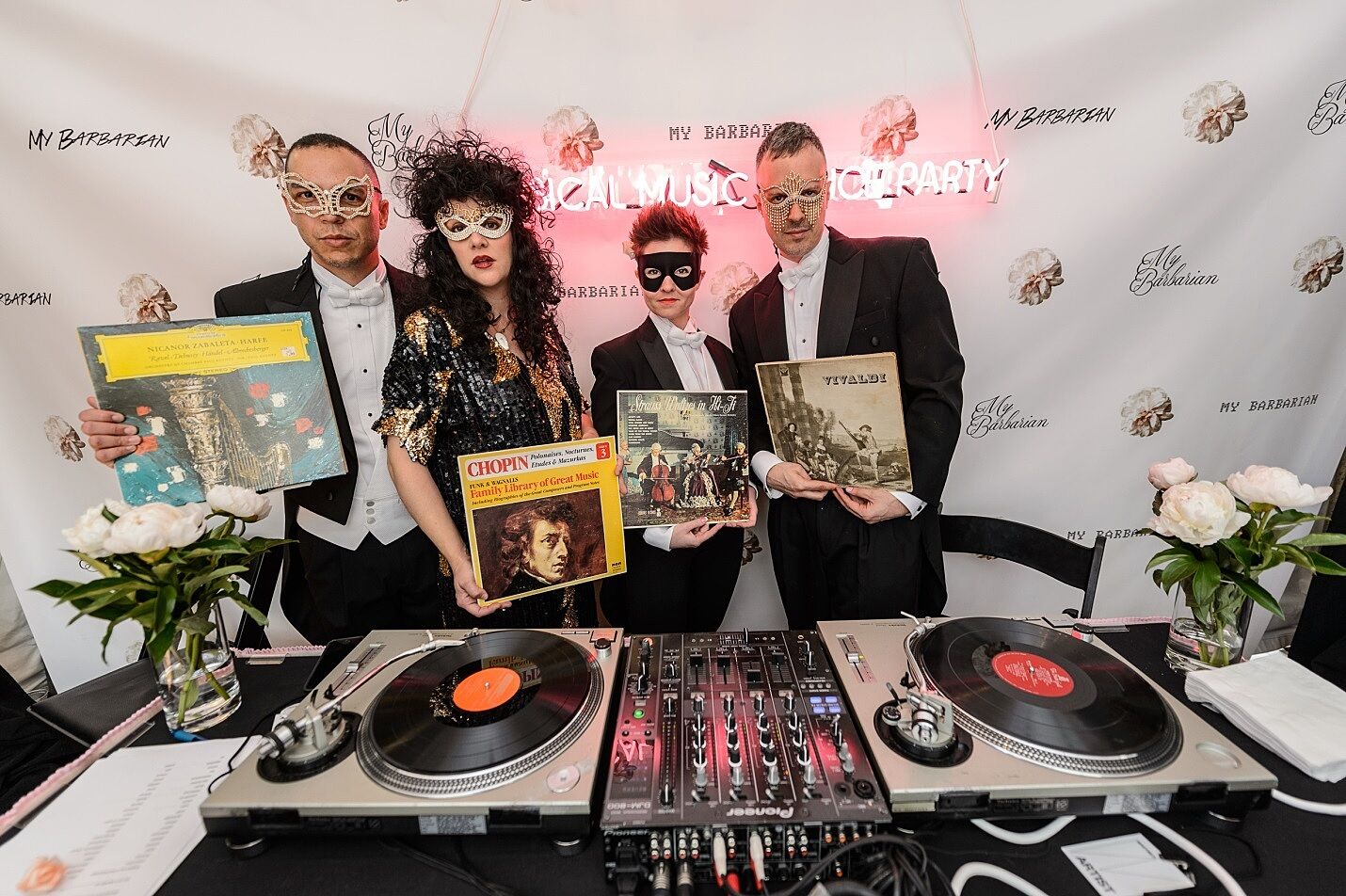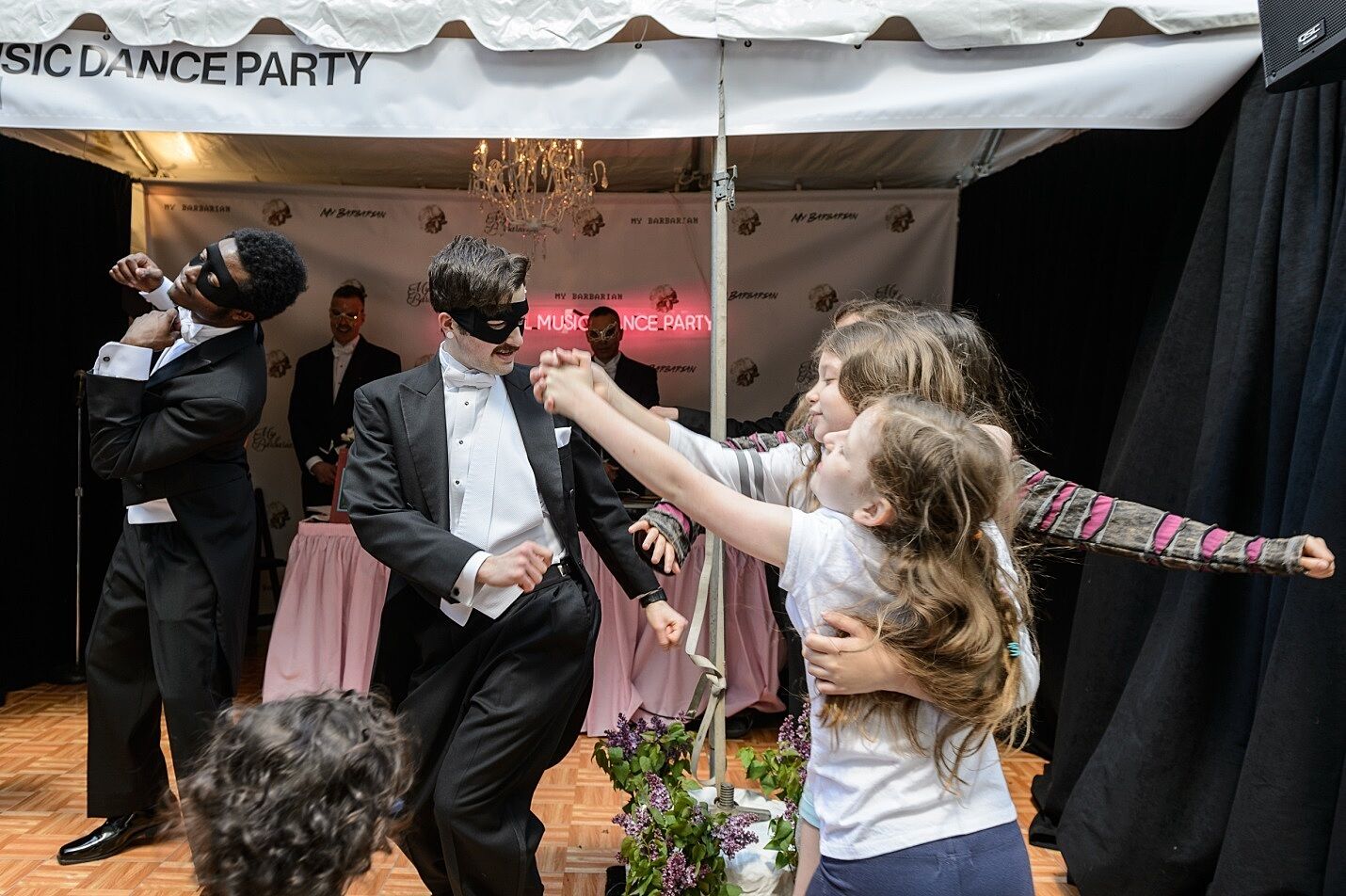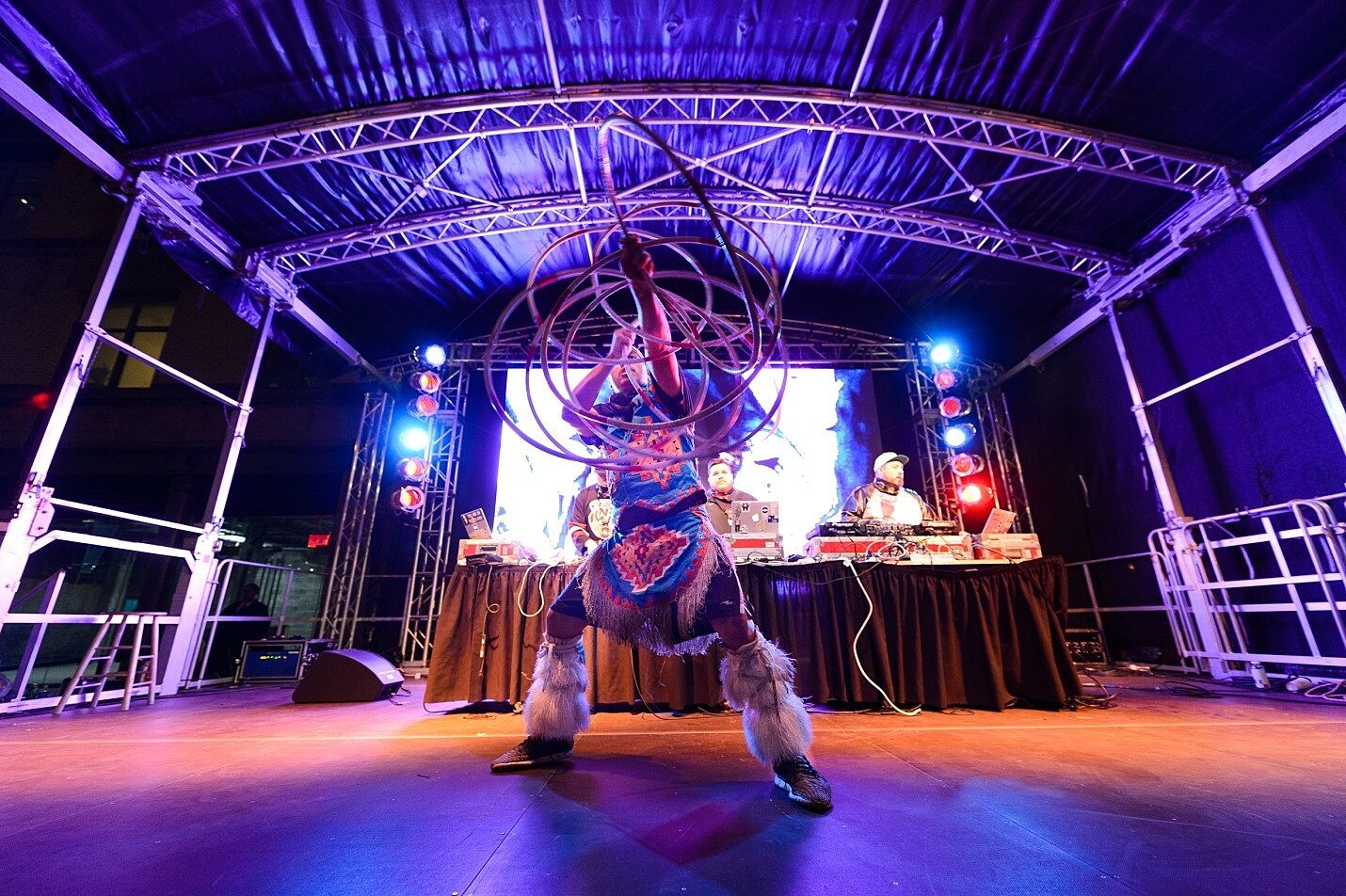Whitney Block Party
May 15, 2015
On Saturday, May 2, the Whitney hosted a free block party in front of the Museum on Gansevoort Street. Created in the spirit of a neighborhood festival, the Whitney Block Party welcomed visitors of all ages with art and performance. Throughout the day, booths designed by a diverse group of contemporary artists and community organizations featured hands-on activities and participatory events including karaoke, map making, and ballroom dancing; while acts on the main stage included dance, music, and poetry. The whole event embodied the Museum’s multidisciplinary and inclusive approach to contemporary art.
The Block Party was truly a collaborative effort that brought staff across the institution together to produce this multi-disciplinary event. Here Education staff share some of their favorite moments.
Emily Arensman, Coordinator of Public Programs, pointed out that although the Museum had openings and previews during the two weeks prior to the Block Party, the street event was welcoming and inclusive to a wider public audience. Arensman noted: “There was something for everyone—neighbors, casual passersby, artists who came by to see their friends—from artist Nari Ward inviting participants to write recipes for smiles in exchange for “canned smiles” to the Meatpacking District Improvement Association (MPIA) who offered walking tours with an expert guide for small groups to explore the Meatpacking District and learn about the history, architecture, and spirit of the neighborhood.”
Danielle Linzer, Director of Access and Community Programs commented that it was wonderful to see local friends and neighbors who stopped by the Community booth throughout the day, including colleagues from MPIA, the High Line, the LGBT Community Center, Westbeth, Hudson Guild, PS 33, and The Door — A Center for Alternatives. A highlight of the day for Linzer was a performance by youth from The Door — an energetic and moving combination of song, step, and dance that brought the house down. Here are a few more highlights:
Megan Heuer, Director of Public Programs and Public Engagement, noted that people from the neighborhood and all over the city who came to the Block Party really felt part of the Whitney for the entire day. The whole community was involved and engaged in making art—inside and outside the Museum. Whether it was singing a song or making a model to add to a New York City map, it all counted. Summing up the day, Arensman overheard near one booth: "The Whitney has always welcomed the wild and wonderful, but this sets a whole new bar."
Artist Lize Mogel invited Block Party participants to collectively build a scale model of New York City. Watch a time-lapse video that documents the construction of the crowd-sourced city.
Dina Helal, Manager of Education Resources

